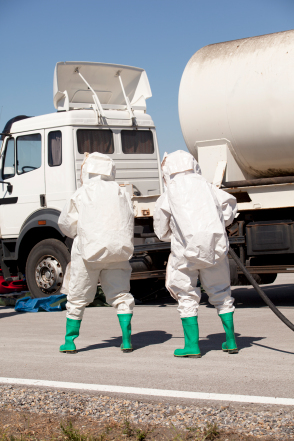Comprehending the Comprehensive Refine of Fluid Garbage Disposal: Finest Practices and Environmental Effect Factors To Consider
The monitoring of fluid waste disposal is a multifaceted issue that requires a thorough understanding of different best practices and their linked environmental effects. From the sorts of liquid waste generated to the methods utilized for collection, therapy, and last disposal, each step plays an essential function in securing environments and public health and wellness. As governing standards develop and technology breakthroughs, the discussion around these processes ends up being progressively essential. What implications do these changes hold for future sustainability initiatives, and exactly how can stakeholders ensure that they are appropriately attended to?
Kinds Of Liquid Waste
Comprehending the numerous kinds of liquid waste is crucial for efficient monitoring and disposal practices. Liquid waste can be generally categorized into a number of kinds, each requiring distinct handling and therapy approaches.
Industrial liquid waste commonly contains dangerous materials, consisting of hefty steels, solvents, and chemicals, produced during producing procedures. These wastes demand strict regulatory compliance to secure human wellness and the setting. Residential fluid waste primarily refers to wastewater created from households, including sewage and greywater, which, although less harmful, can still present substantial threats if poorly managed.
Agricultural liquid waste, including runoff from farms, frequently includes plant foods and pesticides that can result in environmental degradation if not treated effectively. Clinical fluid waste, produced from health care facilities, includes contaminated fluids such as physical liquids and chemicals, calling for specialized disposal approaches to stop infection and ecological contamination.
Last but not least, oil and oil waste, commonly created by restaurants and automobile industries, can cause extreme clogs in drain systems otherwise handled correctly. Comprehending these categories facilitates targeted strategies for therapy, conformity with policies, and effective disposal approaches, eventually promoting ecological sustainability and public health and wellness security.

Collection Techniques
Effective collection approaches are vital for the proper monitoring of fluid waste, ensuring that it is collected safely and successfully before therapy or disposal. Different techniques are utilized depending on the kind of liquid waste created, the volume, and the details attributes of the waste.
One typical method is the use of dedicated collection storage tanks or sumps, which are designed to catch liquid waste at the resource. These systems commonly incorporate pumps that assist in the transfer of waste to larger storage containers or therapy facilities. Furthermore, mobile collection devices geared up with vacuum cleaner technology are utilized in scenarios where waste is generated intermittently or in hard-to-reach areas.
For industrial settings, closed-loop systems can successfully lessen leaks and spills, enabling for the recovery and reuse of liquid waste. It is likewise vital to train workers on correct collection protocols to reduce risks linked with hazardous substances.
Additionally, carrying out normal upkeep schedules for collection tools makes certain optimal performance and security. The combination of advanced monitoring systems can enhance collection effectiveness by supplying real-time information on waste levels and potential risks. In general, efficient collection techniques are fundamental to lasting fluid waste management methods.
Therapy Processes
Treatment procedures play a vital role in the administration of liquid waste, transforming possibly harmful products into risk-free effluents or recyclable resources - liquid waste disposal. These procedures can be generally classified right into physical, chemical, and biological techniques, each tailored to resolve details impurities existing in the waste stream
Physical therapy techniques, such as sedimentation resource and filtering, work by getting rid of put on hold solids and particle issue. These methods are often the very first step in the therapy chain, properly minimizing this contact form the tons on subsequent procedures. Chemical treatments involve the usage of reagents to reduce the effects of dangerous compounds, precipitate hefty metals, or oxidize organic pollutants, thereby improving the safety of the effluent.
Biological treatment procedures, including turned on sludge systems and anaerobic food digestion, maximize the natural capacities of microbes to deteriorate organic matter. These approaches are especially reliable for wastewater including biodegradable toxins. Advanced treatment technologies, such as membrane layer filtration and progressed oxidation procedures, are increasingly used to achieve greater degrees of filtration.
Integrating a combination of these treatment methods not just ensures conformity with regulative requirements but likewise advertises ecological sustainability by recovering beneficial resources from liquid waste.
Disposal Options
Just how can companies ensure the risk-free and accountable disposal of fluid waste? Effective disposal options are vital for guarding public health and wellness and the setting. The key methods include land therapy, incineration, and disposal followed by discharge into local wastewater systems.
Land disposal entails the mindful containment of liquid waste in designated landfills, guaranteeing that it does not leach into surrounding dirt or water. Incineration, on the various other hand, topics fluid waste to high temperature levels, transforming it right into ash and gases, which need appropriate filtering to reduce discharges. This method is suitable for contaminateds materials that can not be treated via typical methods.
In instances where liquid waste can be treated, organizations might go with biological or chemical treatment procedures to reduce the effects of harmful components prior to releasing the treated effluent into metropolitan systems. This course normally lines up with regulatory needs, making sure that the effluent satisfies safety criteria.
Eventually, organizations have to visit homepage carry out extensive assessments of each disposal option to establish its practicality, considering variables such as waste composition, governing conformity, and potential threats to health and the setting. By selecting ideal disposal techniques, businesses can add to a responsible waste monitoring technique.
Ecological Impact
The ecological influence of fluid waste disposal is a crucial factor to consider for organizations seeking to lessen their eco-friendly impact. Additionally, the discharge of neglected or improperly dealt with waste right into surface area waters can result in eutrophication, leading to oxygen deficiency and the succeeding fatality of fish and various other microorganisms.

To minimize these influences, organizations must adopt best techniques such as implementing extensive waste treatment procedures, promoting recycling and reuse, and adhering to regulatory standards. By taking a proactive strategy to fluid waste administration, entities can substantially lower their ecological footprint while supporting lasting advancement goals. Eventually, an extensive understanding of the ecological effects related to fluid waste disposal is crucial for notified decision-making and liable stewardship of natural deposits.
Conclusion
Reliable monitoring of liquid waste is essential for guarding environmental stability and public health and wellness. Inevitably, an extensive understanding of fluid waste disposal not just mitigates environmental effects yet additionally fosters a dedication to liable resource monitoring and ecological stewardship.
The administration of fluid waste disposal is a complex concern that needs an extensive understanding of different finest techniques and their linked environmental impacts. From the types of fluid waste produced to the techniques used for collection, therapy, and last disposal, each step plays a critical role in safeguarding communities and public health and wellness.The ecological effect of fluid waste disposal is an essential factor to consider for companies looking for to decrease their eco-friendly impact. Inevitably, a comprehensive understanding of the ecological effects linked with fluid waste disposal is crucial for educated decision-making and liable stewardship of natural sources.
Eventually, a detailed understanding of fluid waste disposal not only reduces environmental influences yet likewise promotes a commitment to liable source administration and environmental stewardship.